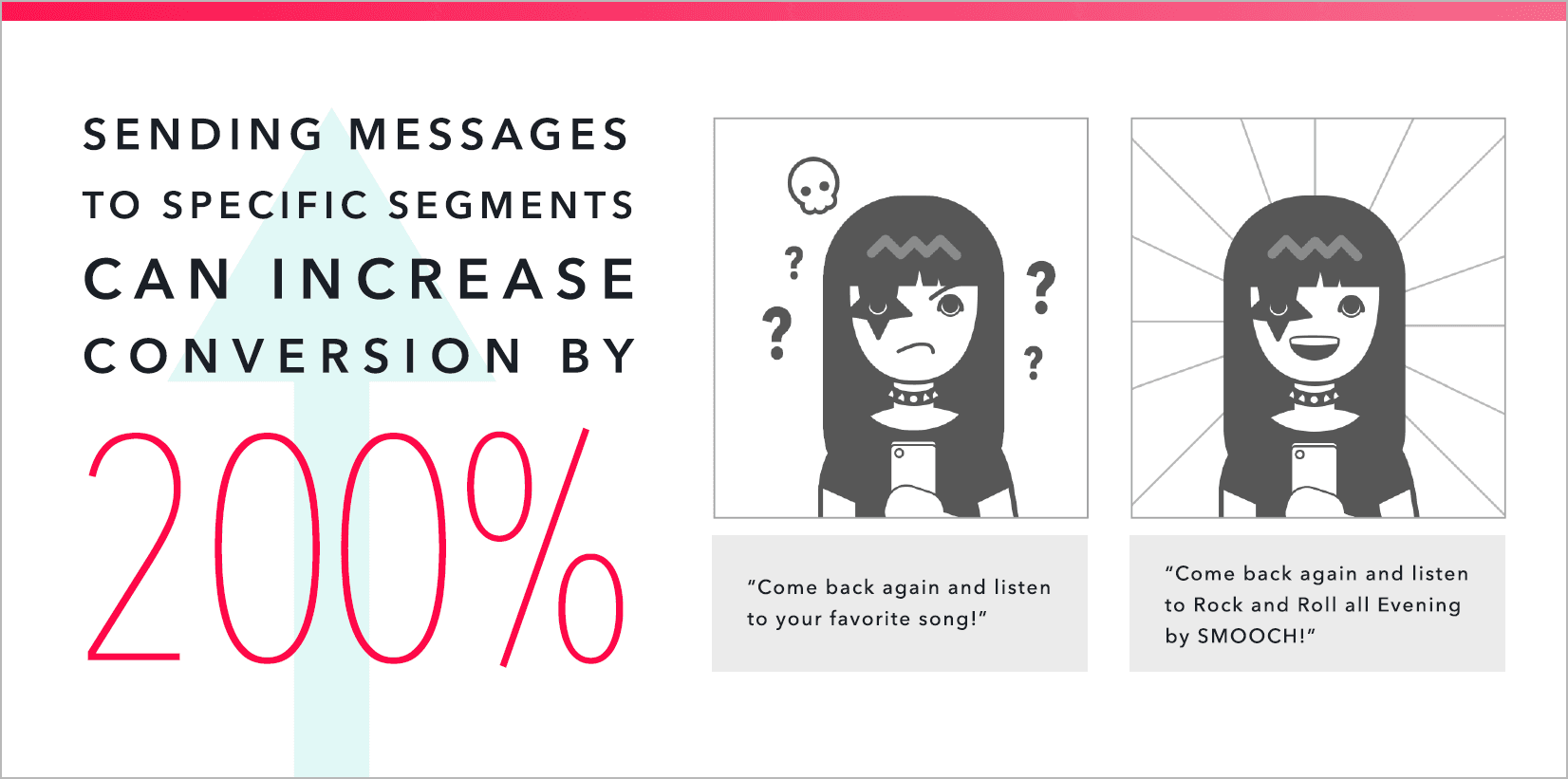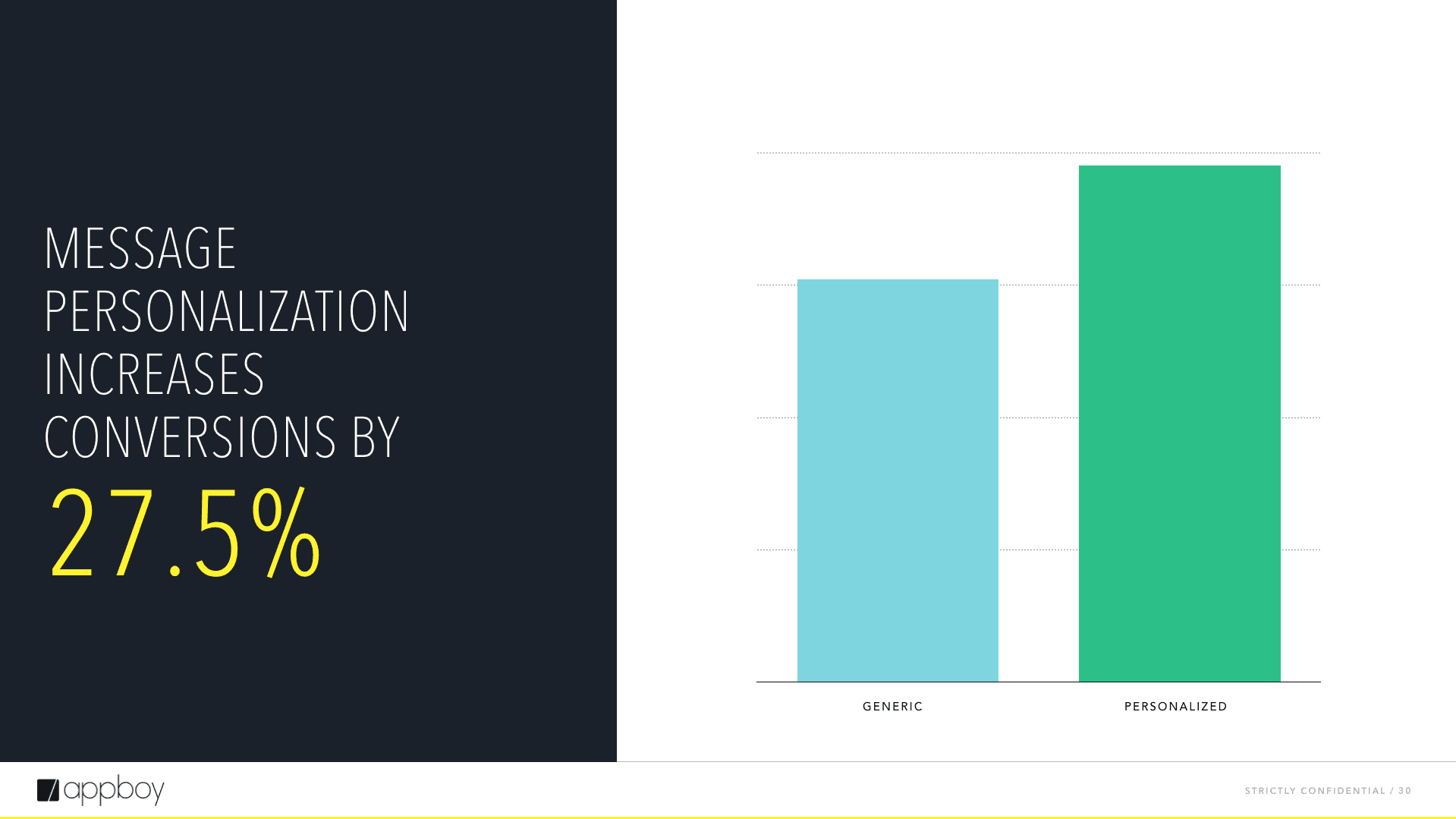The Ultimate Guide to Mobile Engagement
Published on May 18, 2016/Last edited on May 18, 2016/9 min read


Team Braze
Growing a customer base in the mobile age means doing more than simply acquiring new customers and hoping they stick around. Two key facts make the step after acquisition—mobile engagement—absolutely essential: Consistent, engaged customers are at once easier to sell to and harder to “create.” It’s more difficult for brands to encourage and nurture a customer relationship to develop loyalty than to focus solely on acquisition. But it’s crucial.
A Bain study has shown that a 5% increase in customer retention can lead to increasing profitability by 75%. And it’s 50% easier to sell to an existing customer than to a new one. Yet only 55% of customers who download an app will use it again in the next three months. Encouraging consumers to return to your app, website, stores, and continue to engage with your brand is the only way to combat the rising cost of customer acquisition and see long-term success.
And mobile marketers have lots of channels to consider, as customer interactions are becoming more complex. Beyond mobile apps, there’s room for engagement through mobile web and mobile email. The platform economy is commanding a larger portion of the mobile goods and services markets. The Economist predicts that chatbots, or programs that provide services through text-based systems, may be the next big thing, comparable to Apple’s launch of their App Store.
As we’ll explore below, the key to engagement is gearing each customer/brand interaction toward helping your app or product become a habit for the user. Let’s explore this proposition, plus six tried and tested ways to increase engagement through mobile marketing.
The key to retention is early and consistent mobile engagement
Your app’s engagement rates during the first month after download could make all the difference in terms of retention. Appboy original research shows that early and consistent engagement during that first month can yield 90% retention. While this research measured app engagement specifically, the same patterns in early engagement and retention are likely to be seen across brand properties.
To help your customers understand all that you have to offer and foster that early engagement, you’ll want to have a well thought-out mobile onboarding campaign with nudges via email or push notifications to encourage completion. Without a full understanding of your products, customers may not understand the value apparent in later promotions. Many companies provide incentives to encourage customers to complete onboarding. For example, Dropbox gives users a little more storage space for each step completed.
Onboarding is also a great time to communicate your brand’s personality. Customers like to know that behind your company promotions are friendly and helpful people who want to provide valuable services. If your content feels authentic, it will help to build that long-term relationship with your customers.
Beyond the onboarding campaign, marketers can develop ways to keep engagement high for the first month. MyFitnessPal, for example, encourages me to log my daily diary by reminding me in the evening of my current running total (“You’ve logged for 23 days in a row!”) to keep my streak going. Consider special offers or content for newer customers. If a consistent user from weeks one and two starts to fall off in week three, they might just need a little nudge to come back.
Proven engagement tips
1. Use the power of push notifications
Using push notifications during onboarding can be an effective way to keep your users on track. Short, helpful reminders can keep your app top of mind. As shown in our recent infographic on retention, use of push during onboarding boosts next-day retention by 50% and two-month retention by by 71%. You can use push notifications to encourage users to start or complete your onboarding campaign, or for additional incentives once onboarding is complete.

2. Segment your users into thoughtful categories before sending campaigns
If you can make your customers feel like an offer is tailored to them, and not the same thing everyone else gets, they are more likely to engage. Think of it like continuing a conversation: You can build campaigns to reward frequent users for their high engagement and provide special offers to entice less-engaged or lapsed users. And for example, you might be able to send three notifications per day to an active user but this can easily seem like overkill to someone who only used your app on the day they downloaded it three months ago.
Skipping big batch campaigns that go out to everyone and instead sending to targeted segments that take into account personal preferences and previous interactions can increase your conversions by 200%. Running these types of campaigns increases the likelihood that your offer will appeal. As a consumer, you’ve probably been sent targeted messages featuring products similar to your recent browsing or purchase history, aiming to create a more tailored experience for you.

3. Make each interaction a custom fit
Beyond segmenting by activity, personalization according to customer attributes can make a huge difference in engagement. You can take advantage of any information you collect but one simple way to start is to include customer names in your messages. Simply personalizing the name of your user has been found to result in more than a 27.5% increase in conversion.

You can also personalize campaigns by using send-time optimization. Use of send-time optimization to send messages during peak engagement periods boosts engagement by 25%. By taking into account your customer’s time zone, the time of day, and their own personal message-engagement habits, you’re more likely to hit the sweet spot and send messages when they will be likely to fully engage.
4. Make use of multichannel messaging
Want to make sure customers make it through that beautiful onboarding campaign? Spread out your chances by encouraging activity through a variety of channels. In one Appboy study, adding an email reminder after a push notification to complete onboarding increased retention by 130%!
And you don’t have to stop at push and email. News Feed Cards, in-app messages, and in-browser messages are great for less urgent content and for reaching your more engaged customers, who are already logging onto your website or opening your app.
In all channels, remember to use deep linking when sending users to your app.

5. Use relevant images to increase conversions
The composition of your messages also makes a difference—a relevant, attention grabbing image can increase conversions by 57%.

6. Be a leader in your niche
Engagement benchmarks across verticals look different because customers use and interact with different brands in different ways. If a healthcare website tried to get as much daily engagement as a photo sharing app, they’d likely have a long, steep climb ahead. Yet brands in all verticals can aim to increase their own engagement, better connect with their customers, and provide more value in creative ways.
Here are ways different industries can tackle mobile engagement.
Travel
Apps used for travel have a unique engagement challenge because people don’t vacation nearly as much as they might like. An app used to book your annual getaway may not see much use during those months of catch-up work.
Travel apps can build engagement between bookings with well conceived and beautifully produced stories and content to complement special deals, or with enhanced functionality experiments like group bookings. Marketing messages that keep the app at the forefront of customers’ thoughts can help ensure that they return when the time comes to make more memories.
On-demand
Apps that provide goods or services delivered at the push of a button have different challenges. Returning customers are crucial for getting those purchases but churn will be a big challenge if customers can’t really tell the difference between you and your competitor.
On-demand apps can break through the clutter by developing engagement strategies around user behavior and by embracing a brand personality. Sending promotion notifications just before peak hours can encourage customers to pick your app for their late night snack or car ride. Saucey, an app that delivers alcohol, discovered that people love to wind down with a drink at home on Sunday nights, so they chose that time to send out targeted promotions.
Specialized communities
Untappd has embraced their niche as a community for craft beer and used their messaging to encourage community involvement through badges and ratings. Awarding badges for numbers and types of beers logged in the system gives users a “feel-good” factor of accomplishment, which in turn encourages more log-ins.
Practical guides to mobile engagement
Want to dive deeper into these topics and learn how to achieve more engagement? Explore the following guides for actionable tips.
- Build a Habit With Your Customers: Learn how to build an onboarding campaign that will keep your customers coming back.
- Connect With Your Multichannel Customers: Learn to use the four major messaging channels with step-by-step instructions and examples.
- Resource Bundle for Building Customer Loyalty: A kit of seven guides, one-pagers, and infographics to set you up for customer engagement success.
- The Actionable Guide to Mobile Engagement for Travel & Hospitality Apps: A collection of campaign tips and multichannel planning advice for travel brands.
The big point
Last week I downloaded a perfectly nice podcast app, but it didn’t have some functionality I wanted. We just weren’t a good fit. As a consumer, you know that not every brand you try will become your go-to, no matter how persuasively they message you.
If these tips aren’t effective for 100% of your customers, don’t worry. You can’t be all things for all people. Developing a sunsetting policy can help you avoid spamming these people with messages. This is especially important in email, where bad deliverability can affect your chances of reaching the customer who DO want to hear from you.
If you start early with authentic, value-laden interactions to encourage engagement, you’ll be working to build a deep relationship with your customers that will keep them around over time. Once your app has become a habit, keep it up by rewarding your customers for their loyalty.
Be Absolutely Engaging.™
Sign up for regular updates from Braze.




